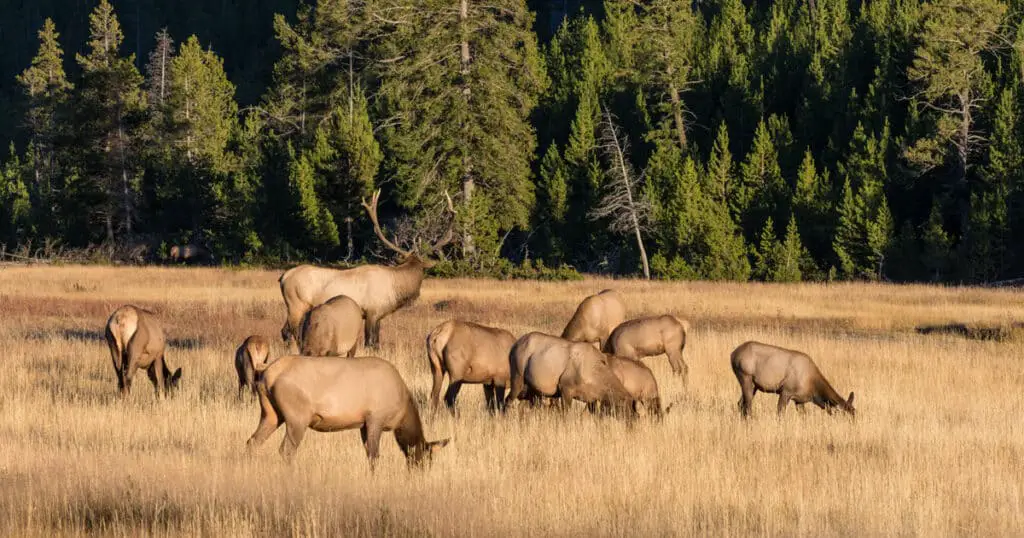Elk are one of the most well-known and popular species of deer in the world. Sometimes referred to as the wapiti or red deer (which differ from Elk), they are primarily found in North America. Elk are not as widespread as other deer species such as whitetail deer or mule deer. However, some states have significant elk populations. Keep reading to learn about the latest data on elk population by state.
States with large elk populations are extremely popular destinations for hunting these animals, as well as elk-related tourism.
Here is our complete guide to elk populations in the United States. We’ll discuss:
- Which state has the largest elk?
- Are there elk in all 50 states?
- Which state has the biggest elk?
- Best elk hunting states
- Elk population history in the United States
Let’s get started!
Which State Has the Largest Elk Population?
Frist, a disclaimer: population estimates are never completely accurate, and reports on the population of any wild animal population is never an exact science.
Population levels will vary from year to year, and a state’s Elk population size is affected by a number of factors.
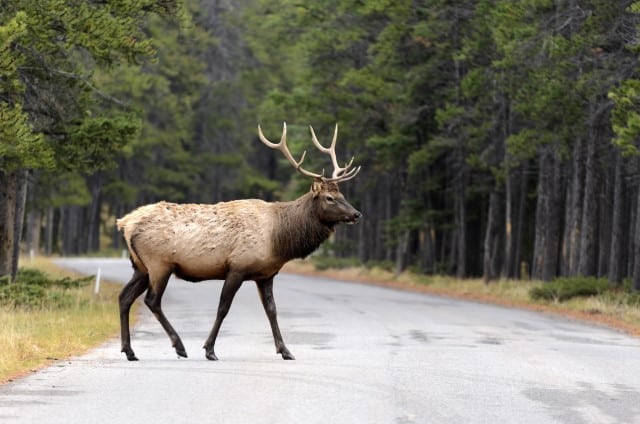
Sometimes there just aren’t as many elk born one year. There might not be good weather conditions, or there could be a successful hunting season.
But the state which ranks highest in terms of elk population every year is Colorado. This state consistently has more elk than any other state in the United States.
Colorado has around 260,000 elk, about 90,000 more than Montana, which ranks second.
Here’s our table showing how many elk there are in all the states that have these animals.
| State | Elk Population |
|---|---|
| Colorado | 260,000 |
| Montana | 170,000 |
| Oregon | 125,000 |
| Idaho | 107,000 |
| Washington | 90,000 |
| Wyoming | 90,000 |
| New Mexico | 70,000 |
| Utah | 68,000 |
| Arizona | 35,000 |
| Nevada | 17,000 |
Are There Elk in All 50 States?
No, there aren’t elk in all 50 states in America. In fact, most states don’t have elk at all!
At one point, however, elk lived in all of the contiguous 48 states. Today, however, the western states have the heaviest concentration of elk.
Elk thrive in areas with forests. Elk are some of the largest species of deer.
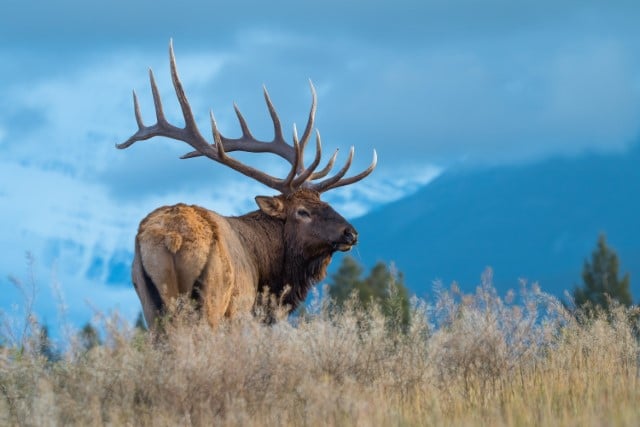
The only type of deer that is larger than elk is moose.
Moose are the largest species of all deer and are on average a foot taller than an elk! Yet elk are still large. That means they need a lot of food to maintain their energy levels.
Forests provide steady food sources that deserts and more rugged climates don’t offer.
Colorado is known for its forests. So, it’s not surprising that elk tend to hang out there.
Although elk don’t live in all 50 states, it’s important to note that all 50 states do have whitetail deer.
In fact, elk make up only a small portion of American deer. The most common species of deer is whitetail.
Whitetail deer don’t usually live in the same areas as elk. They usually live east of the Rocky Mountains. The western part of the United States is most heavily populated by mule deer, which share some habitats with elk.
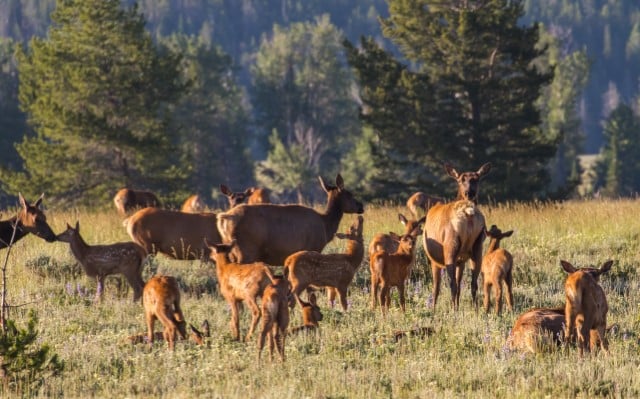
Hawaii is the only state without a natural deer population. However, humans have introduced deer here and cervids have become invasive species.
Deer population statistics exclude deer living in captivity. These numbers don’t include deer living on cervid farms and in zoos.
Which State has the Biggest Elk?
Colorado has not only the largest elk population but also the largest specimens of this species. The largest elk trophies tend to come from Colorado.
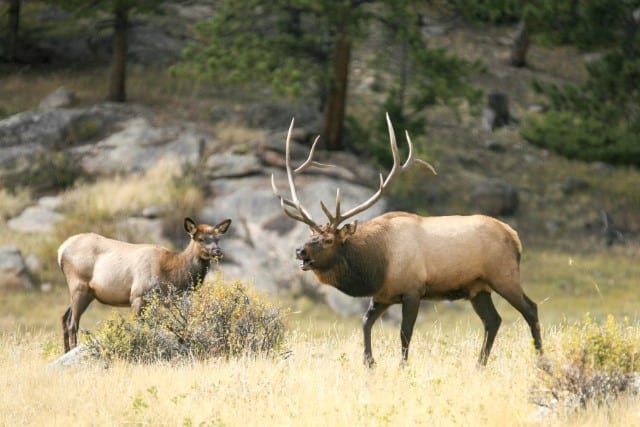
There is a lot of elk hunting in Colorado and a lot of elk tourism. Many state and national parks in Colorado offer the opportunity to explore the park with a park ranger.
Most of these tours include listening to elk bugling. Elks are famous for making this noise.
Elk bugling takes place during the rutting and mating season. The rutting season is when male elk (also called bulls) compete for mates.
Elk bugling serves a number of purposes. Male elk use it to mark territory and attract females.
You can hear this extremely loud sound from miles away. There’s nothing like listening to elk bugling on otherwise quiet nights.
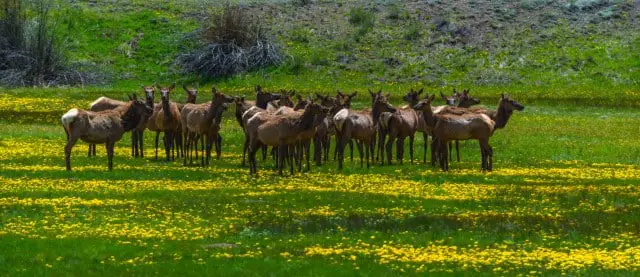
Even non-hunters will enjoy an elk observation excursion in Colorado. It’s an unforgettable experience.
Elk are more social than even whitetail deer. They’re easier for experienced trackers to spot than whitetail deer because they gather in large (and sometimes simply enormous) groups.
Moose, on the other hand, are much more solitary animals.
Best Elk Hunting States
Colorado is by far the most popular state for elk hunting. There is a large tourism industry dedicated to attracting elk hunters.
Most of the elk hunting occurs in the fall and winter.
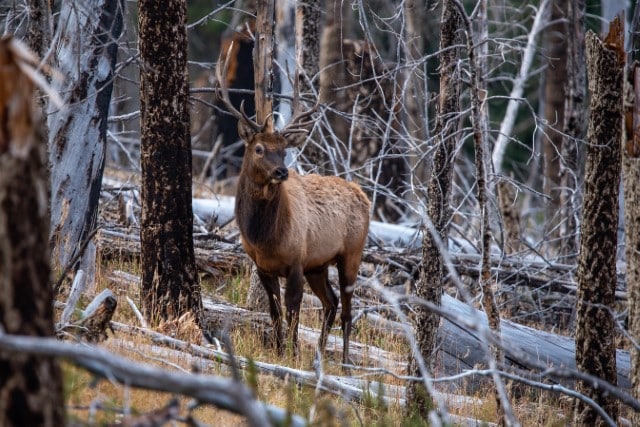
Be aware that there is a lot of hunting competition in Colorado. If you’re the kind of hunter who likes to hunt alone and away from others, Colorado might not be the place for you.
Wyoming is also becoming a popular place for elk hunting.
You certainly won’t run into the large numbers of tourists that you’ll find in Colorado. Oregon, Utah, and Idaho are other good states for elk hunting.
Elk hunting is more rigorous than other types of deer hunting. You won’t like it if you can’t deal with cold weather.
Remember that every state has its own hunting rules and regulations. Make sure to read these before you head out on your trip, and if you’re interested, here’s our list of the worst states for deer hunting so you can avoid these.
Elk Population History in the US
The elk population has changed significantly across the world. At one point in history, the elk’s habitat was much more widespread. This is partly due to habitat change.
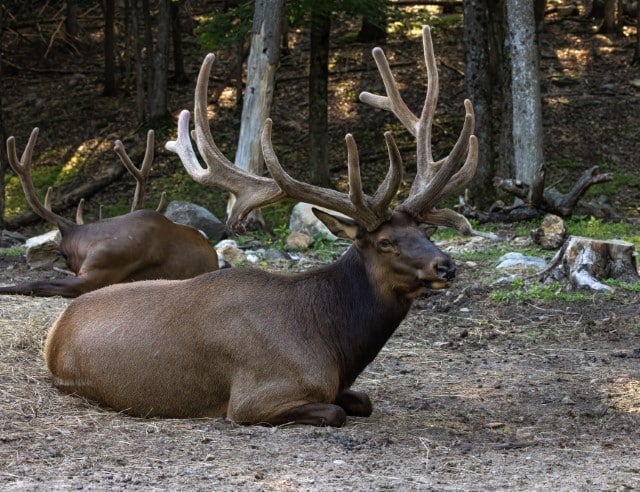
Elk once lived throughout most of what is now the United States, as well as large areas of China and Eastern and Central Asia. Today, the elk’s habitat outside of North America is restricted to areas of Mongolia and Southeastern Russia.
The word “elk” comes from British English and has been used since at least the seventeenth century. However, since there were no elk in the United Kingdom or even in Europe, the term was rather vague and referenced a large deer.
British English doesn’t distinguish the differences between moose and elk. That’s why the terminology can get a bit confusing.
Brits will often incorrectly refer to moose as elk, whereas Americans will make the distinction.
What is Wapiti?
The Native American term wapiti is often used for North American elk. This helps to prevent confusion.
Around 1900, there was a significant decline in elk population and deer population in general throughout North America.
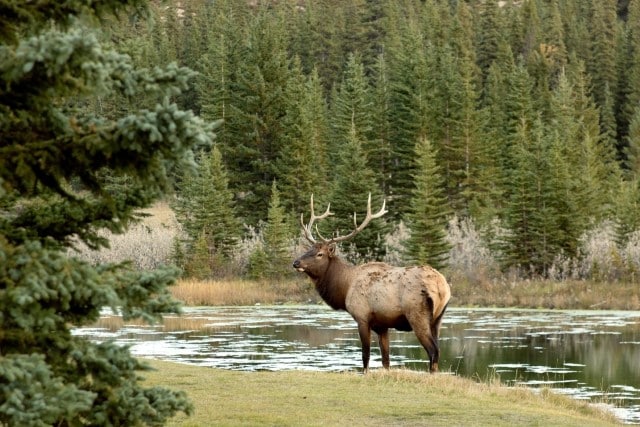
Many species of deer were endangered and almost became extinct. Around the same time, wildlife conservation efforts were put into place.
Throughout the 20th century, North American deer populations progressively returned to normal levels. Elk have successfully been reintroduced to areas of the continent. Elk aren’t currently considered endangered.
However, elk have unfortunately been introduced to areas where they’ve never been native. New Zealand in particular has a huge problem with elk and deer in general.
Europeans introduced non-native deer to New Zealand in the 1800s, and about 15% of those deer are elk.
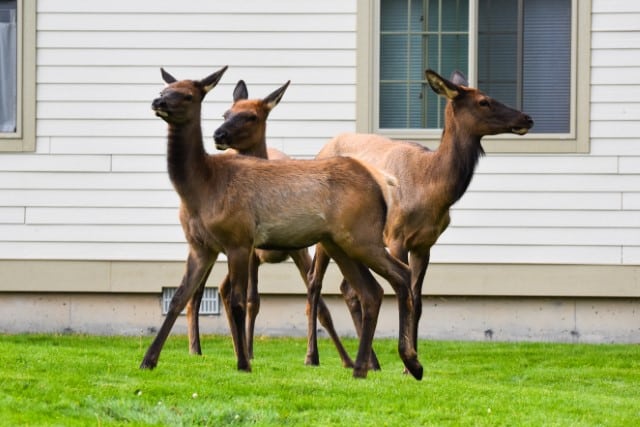
Elk and red deer have become invasive in New Zealand and threaten the natural habitat of native animals. Elk have also been introduced to areas in South America, significantly in Argentina, where they are invasive.
Final Thoughts: Elk Population by State
Elk are the second-largest species of deer in the world in terms of their physical size. In the United States, they are found primarily in Colorado and other western states. They have been successfully reintroduced to other areas of North America.
Colorado has the largest population of elk of any state. It’s also the most popular elk-hunting destination.
Learn more about this species by reading our complete guide to elk.

